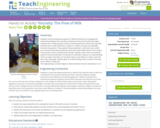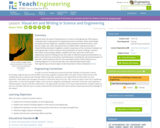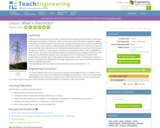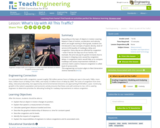
A screencast about transitioning from one topic to the next. It is 2 of 2 in the series titled "Transitioning Topics Effectively." [5:52]
- Subject:
- Arts
- English Language Arts
- Material Type:
- Audio/Video
- Provider:
- Sophia Learning
- Date Added:
- 12/01/2023

A screencast about transitioning from one topic to the next. It is 2 of 2 in the series titled "Transitioning Topics Effectively." [5:52]

Students study the physical properties of different fluids and investigate the relationship between the viscosities of liquid and how fast they flow through a confined area. Student groups conduct a brief experiment in which they quantify the flow rate to understand how it relates to a fluid's viscosity and ultimately chemical composition. They explore these properties in milk and cream, which are common fluids whose properties (and even taste!) differ based on fat content. They examine control samples and unknown samples, which they must identify based on how fast they flow. To identify the unknowns requires an understanding of the concept of viscosity. For example, heavy cream flows at a slower rate than skim milk. Ultimately, students gain an understanding of the concept of viscosity and its effect on flow rate.

Students learn the value of writing and art in science and engineering. They acquire vocabulary that is appropriate for explaining visual art and learn about visual design principles (contrast, alignment, repetition and proximity) and elements (lines, color, texture, shape, size, value and space) that are helpful when making visual aids. A PowerPoint(TM) presentation heightens students' awareness of the connection between art and engineering in order to improve the presentation of results, findings, concepts, information and prototype designs. Students also learn about the science and engineering research funding process that relies on effective proposal presentations, as well as some thermal conductivity / heat flow basics including the real-world example of a heat sink which prepares them for the associated activity in which they focus on creating diagrams to communicate their own collected experimental data.

Students are introduced to the concept of electricity by identifying it as an unseen, but pervasive and important presence in their lives. They are also introduced to the idea of engineers making, controlling and distributing electricity. The main concepts presented are the science of electricity and the careers that involve an understanding of electricity. Students first review the structure of atoms and then learn that electrons are the particles behind electrical current and the motivation for electron movement. They compare conductors and insulators based on their capabilities for electron flow. Then water and electrical systems are compared as an analogy to electrical current. They learn the differences between static and dynamic forms of electricity. A PowerPoint(TM) presentation is included, with review question/answer slides, as well as assessment handouts to practice using electricity-related terms through storytelling and to research electricity-related and electrical engineering careers.

Expanding on the topic of objects in motion covering Newton's laws of motion, acceleration and velocity, which are taught starting in third grade, students are introduced to new concepts of speed, density, level of service (LOS) (quality of roadways), delay and congestion. Every day we are affected by congestion even if we do not step out of our homes. For example, the price we pay for goods increases due to increases in shipping costs caused by congestion delays. A congestion metric would help us to compare roadways and assess improvement methods. A common metric used to measure congestion is called level of service (LOS).